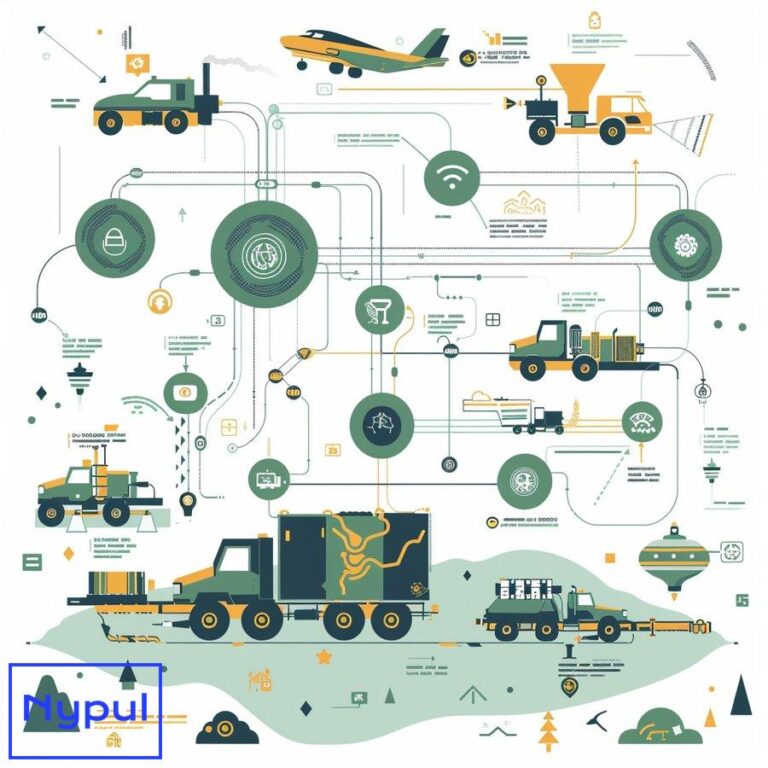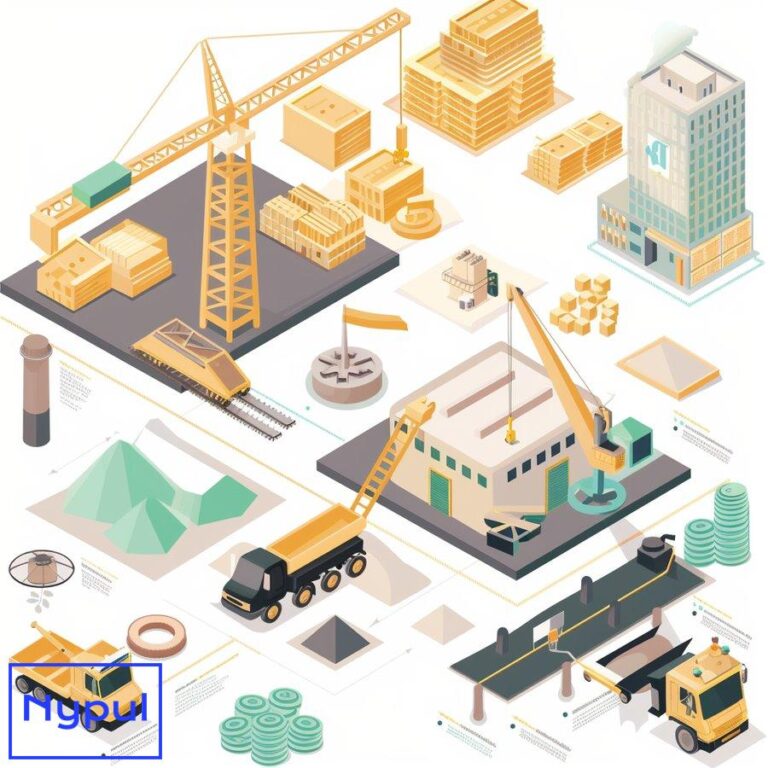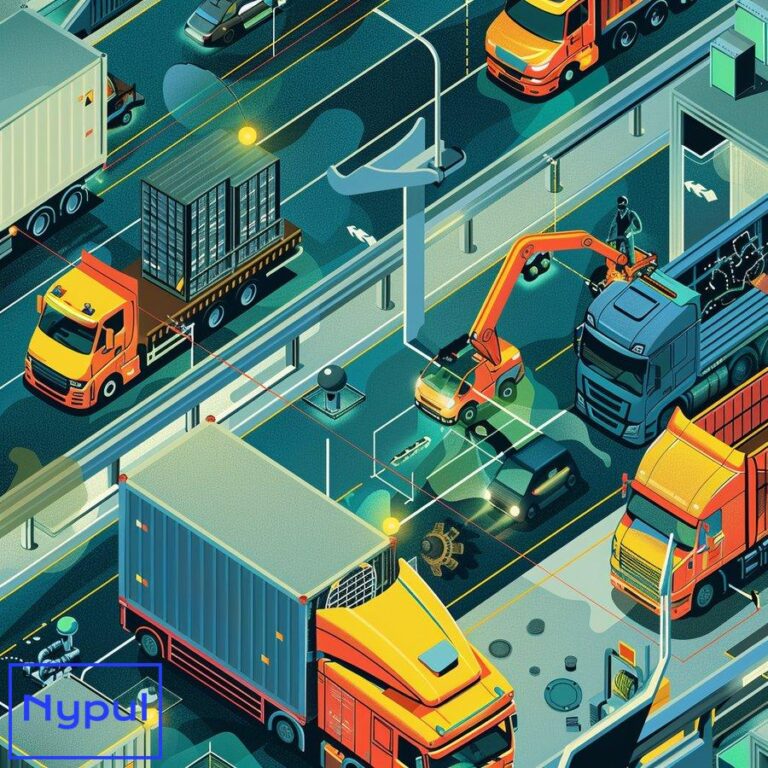What Is Visibility in Transportation
Transportation visibility refers to the ability to track and monitor the movement of goods and shipments in real-time throughout the supply chain. It provides detailed information and transparency into various logistics processes, allowing companies to analyze and improve their operations.
At its core, transportation visibility aims to answer critical questions like: Where is my shipment right now? When will it arrive at its destination? What conditions is it being transported in? This level of insight enables better decision-making, improved efficiency, and enhanced customer service in logistics and supply chain management.
What is Transportation Visibility?
Transportation visibility encompasses the end-to-end tracking and monitoring of shipments as they move through the supply chain. It provides real-time data and insights on the location, status, and condition of goods in transit.
Key components of transportation visibility
Real-time tracking: Using technologies like GPS, IoT sensors, and telematics devices, transportation visibility systems can pinpoint the exact location of shipments at any given moment. This allows stakeholders to follow the journey of goods from origin to destination.
Condition monitoring: Beyond just location data, modern visibility solutions can track environmental factors like temperature, humidity, shock, and light exposure that may impact sensitive cargo. This is especially crucial for industries like pharmaceuticals and perishables.
Status updates: Transportation visibility provides regular status updates on shipments, including estimated arrival times, potential delays, and completion of key milestones like customs clearance.
Data integration: Visibility platforms integrate data from multiple sources, including carriers, warehouses, ports, and other supply chain partners to provide a holistic view of shipment progress.
Analytics and reporting: Advanced visibility solutions offer analytics capabilities to identify trends, bottlenecks, and opportunities for optimization in transportation processes.
Evolution of transportation visibility
Transportation visibility has come a long way from manual check calls and basic shipment tracking. The evolution has been driven by technological advancements and increasing customer expectations:
Past: Limited visibility relied on periodic check calls with drivers and basic location updates.
Present: Real-time tracking leverages GPS, IoT, and cloud computing to provide continuous visibility.
Future: Predictive visibility will use AI and machine learning to forecast potential disruptions and optimize routes proactively.
This evolution has transformed transportation visibility from a nice-to-have feature to an essential capability for modern supply chains. As customer demands for transparency and timely deliveries continue to grow, the importance of robust visibility solutions will only increase.
What Are the Types of Visibility in Transportation?
Transportation visibility comes in various forms, each addressing specific aspects of the supply chain. Understanding these different types can help organizations implement comprehensive visibility strategies.
End-to-end visibility

End-to-end visibility provides a holistic view of the entire supply chain, from raw material sourcing to final delivery. This type of visibility offers:
Comprehensive tracking: Monitors shipments across all modes of transportation and supply chain stages.
Stakeholder collaboration: Enables seamless information sharing among suppliers, manufacturers, carriers, and customers.
Process optimization: Identifies inefficiencies and bottlenecks across the entire supply chain for improvement.
In-transit visibility
In-transit visibility focuses specifically on tracking shipments while they are in motion. Key features include:
Real-time location tracking: Provides up-to-the-minute information on shipment whereabouts.
ETA updates: Offers accurate estimated arrival times based on current location and conditions.
Exception alerts: Notifies stakeholders of delays, route deviations, or other issues affecting transit.
Yard visibility
Yard visibility offers insights into the movement and status of trailers, containers, and other assets within a facility’s yard. Benefits include:
Asset utilization: Improves trailer and container turnover rates.
Dock scheduling: Optimizes loading and unloading operations.
Inventory management: Enhances visibility of goods waiting to be processed or shipped.
Warehouse visibility
Warehouse visibility provides real-time information on inventory levels, order status, and warehouse operations. It encompasses:
Inventory tracking: Monitors stock levels and locations within the warehouse.
Order fulfillment visibility: Tracks the progress of orders from picking to packing and shipping.
Labor and equipment utilization: Optimizes workforce and asset allocation within the warehouse.
Last-mile visibility
Last-mile visibility focuses on the final leg of delivery, from the distribution center to the end customer. It offers:
Real-time delivery tracking: Allows customers to track their packages in real-time.
Proof of delivery: Provides digital confirmation of successful deliveries.
Route optimization: Improves delivery efficiency and reduces transportation costs.
Multimodal visibility
Multimodal visibility tracks shipments across different modes of transportation, such as truck, rail, ocean, and air. This type of visibility:
Seamless tracking: Provides continuous visibility as shipments transition between modes.
Mode-specific insights: Offers tailored information relevant to each transportation mode.
Intermodal efficiency: Optimizes connections and handoffs between different modes of transport.
By implementing a combination of these visibility types, organizations can gain a comprehensive view of their transportation operations and make data-driven decisions to improve efficiency, reduce costs, and enhance customer satisfaction.
How Does Transportation Visibility Work?
Transportation visibility systems leverage a combination of technologies, data integration, and analytics to provide real-time insights into shipment status and location. Understanding the mechanics behind these systems can help organizations implement and utilize them effectively.
Data collection
The foundation of transportation visibility lies in collecting accurate and timely data from various sources:
GPS tracking: Utilizes satellite technology to pinpoint the exact location of vehicles and shipments.
IoT sensors: Monitors environmental conditions like temperature, humidity, and shock.
Telematics devices: Captures vehicle performance data and driver behavior.
Electronic logging devices (ELDs): Records hours of service and compliance information.
RFID and barcode scanning: Tracks shipments at key checkpoints throughout the supply chain.
Data integration
Once collected, data from various sources must be integrated to provide a cohesive view of transportation operations:
API connections: Enables real-time data exchange between different systems and platforms.
EDI (Electronic Data Interchange): Facilitates standardized data transfer between trading partners.
Cloud-based platforms: Centralizes data storage and enables access from anywhere.
Data normalization: Ensures consistency in data formats and units across different sources.
Real-time processing
Transportation visibility systems process incoming data in real-time to provide up-to-date information:
Event processing: Identifies and flags significant events or milestones in the shipment journey.
Geofencing: Triggers alerts when shipments enter or exit predefined geographical areas.
ETA calculations: Continuously updates estimated arrival times based on current conditions.
Exception management: Detects and alerts stakeholders to deviations from planned routes or schedules.
Analytics and insights
Advanced visibility platforms go beyond raw data to provide actionable insights:
Predictive analytics: Forecasts potential delays or disruptions based on historical data and current conditions.
Performance metrics: Calculates KPIs like on-time delivery rates and transit times.
Route optimization: Suggests optimal routes based on real-time traffic and weather data.
Carrier scorecards: Evaluates and compares carrier performance across various metrics.
User interface and reporting
The final component of transportation visibility systems is presenting information in an accessible and actionable format:
Customizable dashboards: Allows users to view the most relevant information at a glance.
Interactive maps: Provides visual representation of shipment locations and routes.
Automated alerts: Notifies stakeholders of important events or exceptions via email, SMS, or in-app notifications.
Customizable reports: Generates detailed reports on various aspects of transportation performance.
By integrating these components, transportation visibility systems provide a comprehensive view of shipment status and performance, enabling organizations to make informed decisions and improve their logistics operations.
What Are the Key Benefits of Transportation Visibility?
Implementing robust transportation visibility solutions offers numerous advantages for organizations across the supply chain. These benefits extend beyond simple tracking and can significantly impact operational efficiency, customer satisfaction, and bottom-line results.

Improved customer service
Transportation visibility directly enhances the customer experience:
Real-time updates: Customers can track their shipments in real-time, reducing anxiety and inquiries.
Proactive communication: Organizations can notify customers of potential delays or issues before they occur.
Accurate ETAs: Precise arrival time estimates allow customers to plan accordingly.
Enhanced operational efficiency
Visibility into transportation processes enables organizations to optimize their operations:
Resource allocation: Better visibility allows for more efficient use of vehicles, drivers, and warehouse space.
Route optimization: Real-time data on traffic and weather conditions enables dynamic route adjustments.
Reduced dwell times: Yard and dock visibility helps minimize waiting times for loading and unloading.
Inventory optimization: Accurate in-transit visibility allows for leaner inventory management.
Cost reduction
Transportation visibility can lead to significant cost savings:
Reduced detention and demurrage: Better planning and communication minimize fees for delayed container returns or pickups.
Optimized mode selection: Visibility across modes enables choosing the most cost-effective transportation options.
Decreased safety stock: Improved reliability in transit times allows for reduced safety stock levels.
Lower administrative costs: Automation of tracking and reporting reduces manual labor and associated costs.
Risk mitigation
Visibility solutions help organizations identify and address potential risks:
Proactive problem-solving: Early detection of delays or issues allows for timely interventions.
Compliance monitoring: Ensures adherence to regulations, especially for sensitive or hazardous goods.
Loss prevention: Real-time tracking and condition monitoring help prevent theft and damage.
Supply chain resilience: Visibility enables quick responses to disruptions, improving overall supply chain resilience.
Data-driven decision making
Transportation visibility provides valuable data for strategic planning:
Performance analytics: Enables detailed analysis of carrier, route, and mode performance.
Continuous improvement: Identifies trends and bottlenecks for ongoing optimization.
Forecasting accuracy: Historical data improves demand forecasting and capacity planning.
Benchmark comparisons: Allows organizations to compare their performance against industry standards.
Enhanced collaboration
Visibility fosters better cooperation among supply chain partners:
Information sharing: Provides a single source of truth for all stakeholders.
Streamlined communication: Reduces the need for manual check-ins and status updates.
Vendor management: Improves relationships with carriers and other service providers through transparent performance metrics.
Sustainability improvements
Transportation visibility can contribute to more sustainable logistics operations:
Reduced empty miles: Better visibility enables more efficient backhaul planning and load consolidation.
Carbon footprint tracking: Allows organizations to measure and report on emissions from transportation activities.
Mode optimization: Enables selection of more environmentally friendly transportation modes when possible.
By leveraging these benefits, organizations can transform their transportation operations from a cost center to a strategic advantage, driving improved performance across the entire supply chain.
What Challenges Exist in Achieving Visibility in Transportation?
While the benefits of transportation visibility are clear, implementing and maintaining effective visibility solutions comes with its own set of challenges. Understanding these obstacles is crucial for organizations looking to enhance their visibility capabilities.
Data quality and consistency

Ensuring accurate and consistent data across various sources can be challenging:
Data silos: Information may be scattered across different systems and departments.
Inconsistent formats: Data from various partners may come in different formats, requiring normalization.
Real-time updates: Maintaining up-to-the-minute accuracy across all data points can be technically challenging.
Integration complexity
Connecting disparate systems and technologies can be a complex undertaking:
Legacy systems: Older IT infrastructure may not easily integrate with modern visibility solutions.
Multiple stakeholders: Coordinating data sharing across numerous supply chain partners can be difficult.
API limitations: Some systems may have limited or outdated APIs, making real-time data exchange challenging.
Technology adoption
Implementing new visibility technologies can face resistance:
User adoption: Employees may be resistant to changing established processes.
Training requirements: Staff may need extensive training to effectively use new visibility tools.
Hardware investments: Implementing IoT sensors or GPS trackers may require significant upfront costs.
Data security and privacy
Protecting sensitive information while maintaining visibility is a delicate balance:
Cybersecurity risks: Increased data sharing can create new vulnerabilities to cyber attacks.
Compliance requirements: Adhering to data protection regulations like GDPR while maintaining visibility can be challenging.
Intellectual property concerns: Some partners may be hesitant to share data that could reveal proprietary information.
Scalability
As organizations grow, scaling visibility solutions can present challenges:
Increased data volume: Handling larger amounts of data requires robust infrastructure.
Geographic expansion: Maintaining visibility across new regions may involve different regulatory and technological landscapes.
Partner network growth: Integrating visibility across an expanding network of carriers and suppliers can be complex.
Cost considerations
Implementing comprehensive visibility solutions can be expensive:
Initial investment: The upfront costs of visibility technologies and integration can be significant.
Ongoing maintenance: Keeping systems up-to-date and functioning optimally requires continuous investment.
ROI justification: Quantifying the return on investment for visibility solutions can be challenging, especially in the short term.
Data interpretation and action
Having visibility is only valuable if the data can be effectively used:
Information overload: Too much data can overwhelm users, making it difficult to identify actionable insights.
Predictive capabilities: Developing accurate predictive models based on visibility data requires advanced analytics skills.
Decision-making processes: Organizations may need to adapt their decision-making processes to fully leverage real-time visibility.
Standardization issues
Lack of industry-wide standards can hinder visibility efforts:
Varied tracking methods: Different carriers and modes may use incompatible tracking systems.
Inconsistent milestones: What constitutes a key shipment milestone may vary across partners.
Data definitions: Terminology and metrics may be defined differently across organizations.
By acknowledging and addressing these challenges, organizations can develop more effective strategies for implementing and maintaining transportation visibility solutions. Overcoming these obstacles often requires a combination of technological investment, process reengineering, and cultural change within the organization and across the broader supply chain network.
How Can Organizations Implement Effective Visibility Solutions
Implementing effective transportation visibility solutions requires a strategic approach that addresses both technological and organizational aspects. Here’s a comprehensive guide to help organizations successfully deploy visibility systems:
![]()
Assess current capabilities and needs
Before implementing new solutions, organizations should evaluate their existing visibility capabilities:
Gap analysis: Identify areas where current visibility falls short of organizational needs.
Stakeholder input: Gather requirements from various departments, including logistics, customer service, and finance.
Benchmark comparison: Compare current capabilities against industry standards and best practices.
Define clear objectives
Establish specific goals for the visibility implementation:
Key performance indicators (KPIs): Define measurable targets for improvement, such as reduced transit times or increased on-time deliveries.
Scope definition: Determine which parts of the supply chain will be covered by the visibility solution.
Prioritization: Identify which visibility capabilities are most critical for immediate implementation.
Choose the right technology
Select visibility solutions that align with organizational needs and existing infrastructure:
Platform evaluation: Assess various visibility platforms based on features, scalability, and integration capabilities.
IoT sensor selection: Choose appropriate tracking devices for different types of shipments and transportation modes.
Cloud vs. on-premise: Decide between cloud-based solutions for flexibility or on-premise systems for greater control.
Ensure data quality and integration
Develop a strategy for maintaining high-quality, integrated data:
Data standardization: Establish common data formats and definitions across the organization and with partners.
API development: Create robust APIs to facilitate real-time data exchange between systems.
Data cleansing: Implement processes to identify and correct data inconsistencies or errors.
Build a collaborative network
Engage with supply chain partners to create a comprehensive visibility network:
Partner onboarding: Develop a structured process for integrating carriers, suppliers, and other partners into the visibility system.
Data sharing agreements: Establish clear guidelines for what data will be shared and how it will be used.
Incentive alignment: Create mutual benefits for partners to encourage active participation in the visibility network.
Implement in phases
Roll out the visibility solution in stages to manage complexity and ensure success:
Pilot programs: Start with small-scale implementations to test and refine the system.
Modular approach: Implement visibility capabilities one at a time, starting with the most critical areas.
Continuous improvement: Regularly assess the implementation and make adjustments based on feedback and performance data.
Invest in change management
Ensure successful adoption of the new visibility solutions:
Training programs: Provide comprehensive training for all users of the visibility system.
Communication strategy: Clearly communicate the benefits and expectations of the new visibility capabilities.
Champions and super-users: Identify and empower individuals within the organization to drive adoption and provide peer support.
Leverage analytics and automation
Maximize the value of visibility data through advanced analytics and automation:
Predictive analytics: Implement machine learning algorithms to forecast potential disruptions and optimize operations.
Automated alerts: Set up intelligent alerting systems to notifystakeholders of critical events or exceptions.
Business intelligence tools: Integrate visibility data with BI platforms for deeper insights and reporting.
Ensure security and compliance
Implement robust security measures to protect sensitive data:
Encryption protocols: Use strong encryption for data in transit and at rest.
Access controls: Implement role-based access to ensure users only see data relevant to their responsibilities.
Compliance monitoring: Regularly audit the system to ensure adherence to relevant regulations like GDPR or CCPA.
Measure and communicate ROI
Demonstrate the value of the visibility implementation:
Performance tracking: Regularly measure and report on improvements in KPIs.
Cost savings analysis: Quantify cost reductions achieved through improved visibility.
Customer satisfaction surveys: Gather feedback on how enhanced visibility has impacted customer experience.
Continuous optimization
Treat visibility as an ongoing initiative rather than a one-time project:
Regular reviews: Conduct periodic assessments of the visibility system’s performance and capabilities.
Technology updates: Stay informed about new visibility technologies and upgrade systems as needed.
Feedback loops: Establish mechanisms for users and partners to provide ongoing input for improvements.
By following these steps, organizations can implement effective transportation visibility solutions that drive significant improvements in efficiency, customer satisfaction, and overall supply chain performance. The key to success lies in a holistic approach that addresses not just the technological aspects, but also the organizational and cultural changes required to fully leverage the power of visibility.
As transportation networks become increasingly complex and customer expectations continue to rise, the importance of robust visibility solutions will only grow. Organizations that invest in comprehensive visibility capabilities today will be well-positioned to navigate the challenges and opportunities of tomorrow’s supply chain landscape.
In conclusion, transportation visibility is no longer a luxury but a necessity in today’s fast-paced, interconnected world of logistics. By providing real-time insights into the movement of goods, visibility solutions enable organizations to make more informed decisions, respond quickly to disruptions, and ultimately deliver better service to their customers. While implementing effective visibility systems comes with its challenges, the benefits in terms of operational efficiency, cost savings, and competitive advantage make it a worthwhile investment for any organization serious about optimizing its supply chain operations.




